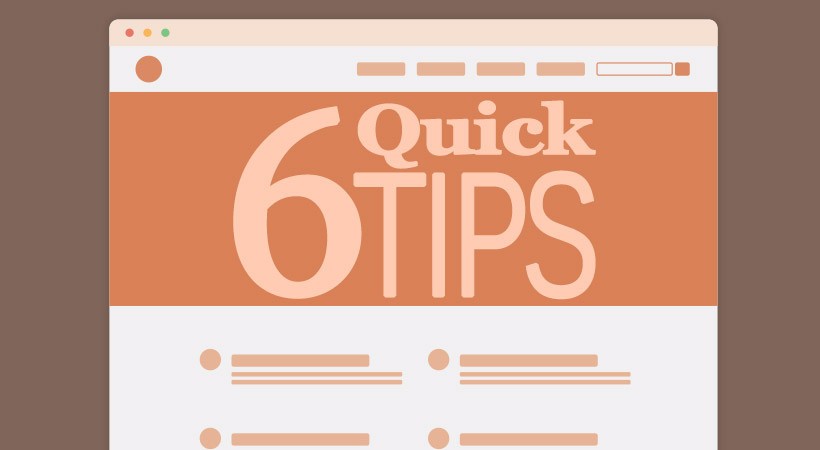
6 Beginner Tips from Web Design Pros
We've compiled six tips from some awesome and seasoned web designers to help you as you begin your web design journey. Hopefully you can learn from their mistakes, or take their advice to make your designs even better.
1. Shoot for Great over New
"Don’t worry about inventing something original. Instead, focus on creating something solid, tight and consistent. I wasted a lot of time as a young designer, being discouraged because what I was making didn’t feel unique to me. Counterintuitively, the more time I spent copying other people’s styles, the better I got at establishing my own taste. So, when in doubt, shoot for great over new."
Dan Mall danielmall.com
2. Don't Take Criticism Personally
"When I first stared out, I wish I knew how not to take criticisms personally. I took things to heart in the past and I guess over time, you just learn how to deal with it."
Jan Cavan Boulas jancavan.com
3. Form Follows Function
"I wish I knew that form truly follows function. I spent way too much time trying to make my designs pretty, when in reality, they were already broken functionally. Instead of designing to impress designers, design to serve those who will use your design to accomplish some goal. With this in mind, I have found that simplicity is your best friend in achieving functional design – not only that, but with today’s current design trends, it will provide you with a modern, clean interface."
Chandler Van De Water chandlervdw.com
4. A PSD to HTML Service can Help You Learn
"Using a service like Chop-Chop can help you understand why your design is cut up a certain way and the techniques used to create effective layouts. You can build the cost of the service into the cost of the design for your client and then learn from it."
Chad Dahlgren Developer at Digital-Tutors
5. Focus on User Experience Instead of Perfect Design
"When I started out designing for interactive, I was entirely too obsessed with making each and every deliverable pixel perfect. I was so focused on making beautiful things that I often failed to create truly usable experiences. Good interaction design is driven by systematic thinking. As designers, when we get too obsessed with aesthetics too early in the design process we risk losing sight of the experience as a whole. I encourage all designers to try creating rapid iterative deliverables that help them learn about their users and validate their approach. Try quick wireframing on paper, pin it up and see how it flows. Create a quick prototype that your audience can click through and see if they get it. Instead of building one fully flushed out mockup, rough out three or four templates. You can always refine the aesthetics of a highly functional design."
Adrian Taylor designtaylor.com
6. Take It One Step at a Time
"Don't try to learn everything all at once. HTML is the foundation for everything on the web, so that is the best place to start. From there, learn how to change the presentation of HTML with CSS. After you have a firm grasp on those, then move on to JavaScript. If you try to learn everything at the same time, not only is it really overwhelming, it also makes it harder to learn the role of each in the web."
Susan Simkins Web Tutor at Digital-Tutors

